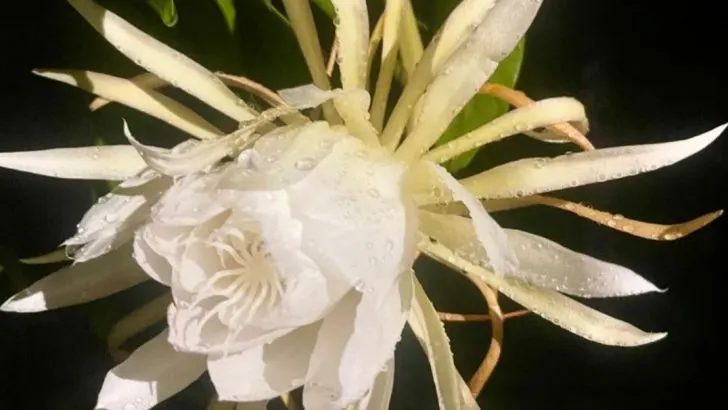Not all magic in the garden happens under the sun. While most flowers stretch toward daylight, a rare and secretive group of plants reserves its most breathtaking displays for the stillness of night — and some of them wait for one very specific moment: the full moon. These moon-sensitive bloomers have puzzled botanists, enchanted gardeners, and inspired folklore for centuries.
Some open their petals for just a few hours under lunar light, releasing fragrance strong enough to stop you in your tracks. Others bloom in perfect synchronization with moon phases across entire regions, as if pulled by invisible tides. A few are so rare, their full-moon blossoms are treated like natural events worth gathering for.
Whether you’re drawn to gardening mysteries, love nocturnal beauty, or want to create a moonlit garden that feels otherworldly, these 16 plants will change how you look at nighttime in nature. You might even find yourself watching the lunar calendar as closely as the weather forecast.
Here are 16 plants that prove the moon has more influence on your garden than you ever imagined.
Night-Blooming Cereus
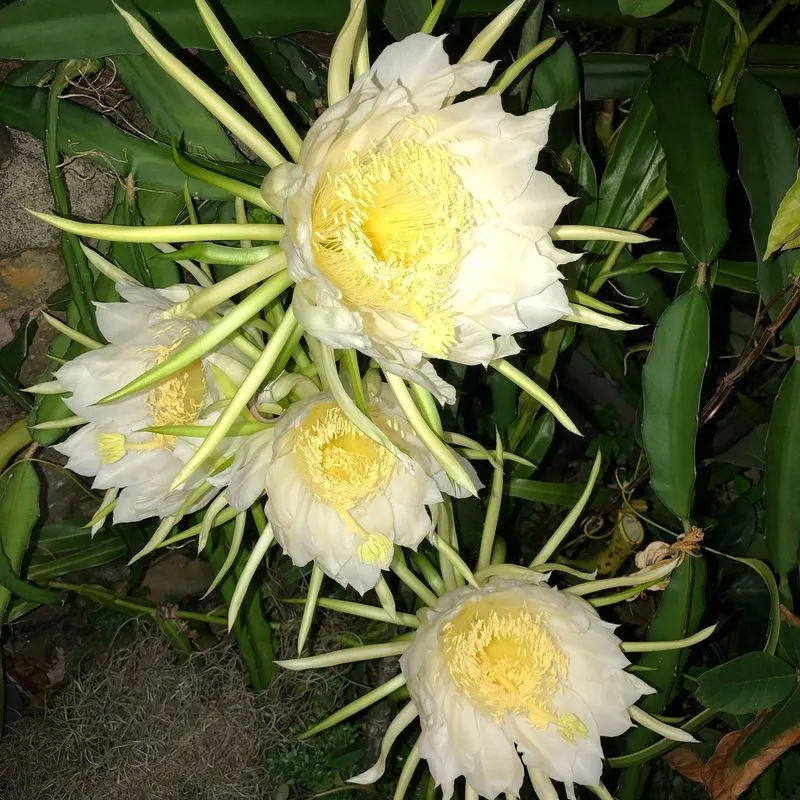
Ever heard the phrase ‘Queen of the Night’? This cactus is precisely why. Known for blooming but once a year and only at night, its massive, fragrant flowers captivate those lucky enough to witness them. These blooms are a fleeting spectacle, lasting only until dawn. Found in arid regions of the Americas, the Night-Blooming Cereus defies its harsh surroundings with elegance. For many, catching a glimpse of this rare event is akin to a cherished mid-summer night’s dream. Imagine gathering with friends, anticipating this botanical wonder to unfold.
Moonflower
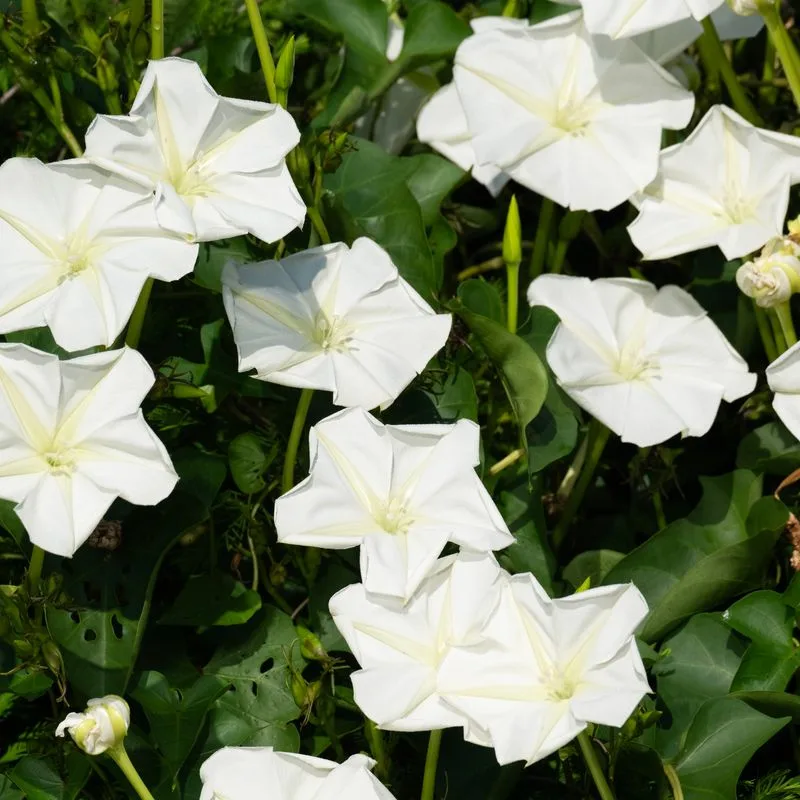
With petals unfurling in twilight, the Moonflower is the night owl of the plant world. These large, white blossoms spiral open as the sun dips below the horizon, releasing a sweet fragrance that entices evening pollinators. Native to tropical regions, this vine’s rapid growth and enchanting blooms make it a favorite among gardeners. Additionally, its heart-shaped leaves add to its allure, creating a verdant backdrop by day. Picture a warm evening, sipping tea in a garden bathed in moonlight, while these ethereal flowers steal the show.
Evening Primrose
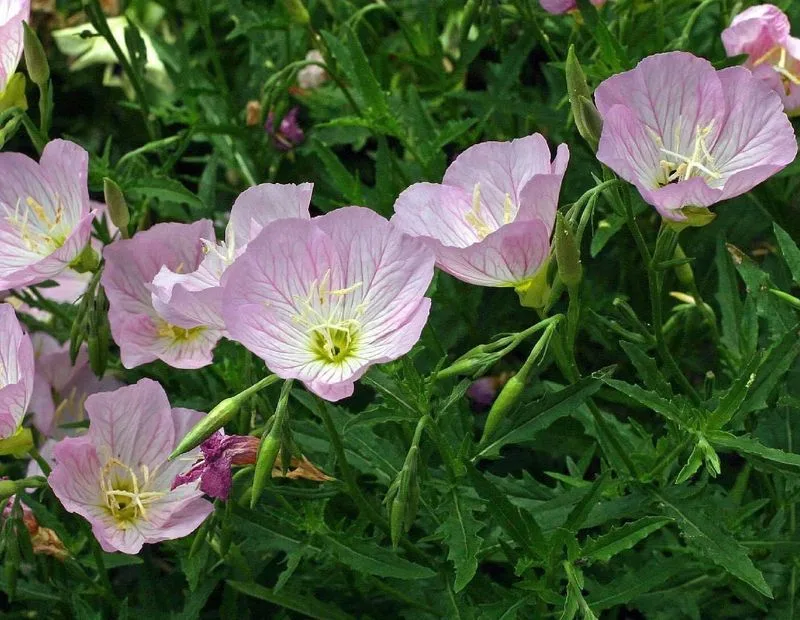
As dusk settles, the Evening Primrose unfurls its yellow blooms, transforming gardens into golden wonderlands. This nocturnal spectacle is not just for show; it serves an essential ecological role. These flowers attract night-flying moths, crucial for pollination. Originating from North America, Evening Primrose is now a beloved garden staple worldwide. Its oil, extracted from seeds, is treasured for various health benefits. Imagine the gentle rustling of leaves, accompanied by the quiet opening of these blooms, painting the night with their golden hues.
Tuberose
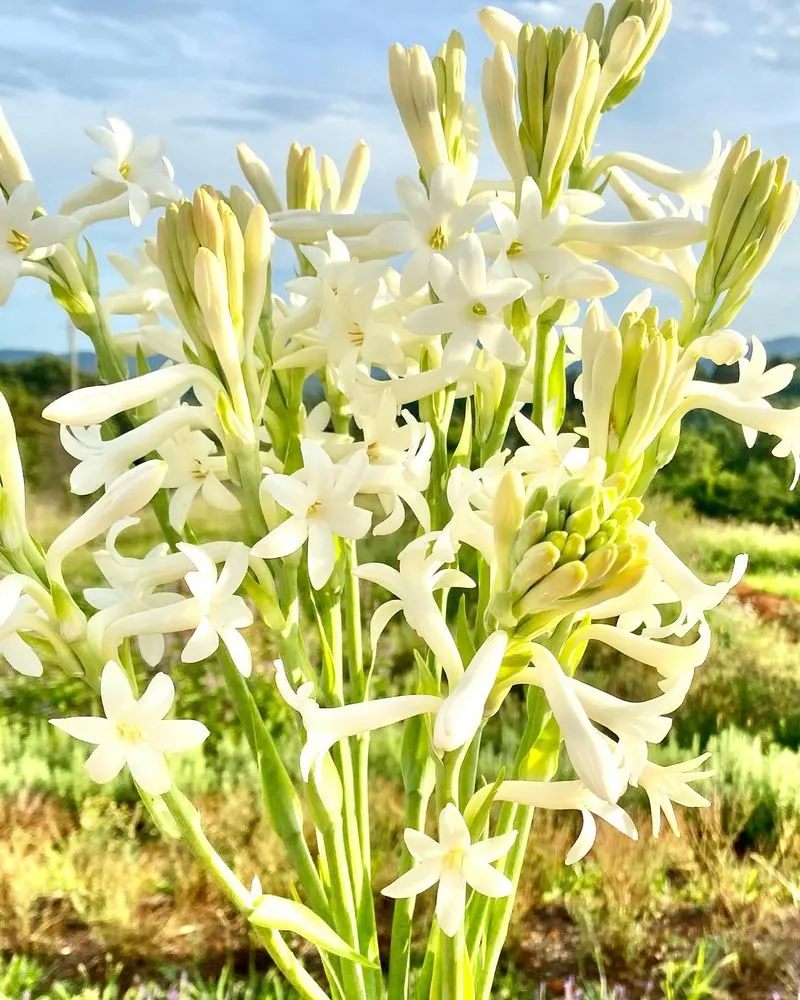
Renowned for its intoxicating fragrance, the Tuberose’s blooms are a staple in perfumery and often symbolize forbidden pleasures. As night falls, these white flowers awaken, filling the air with a heady aroma. Native to Mexico, their allure extends beyond mere scent; the blossoms are strikingly beautiful. Historically, tuberose has been used in traditional rituals and ceremonies. Imagine walking through a garden, the moon illuminating your path, and being enveloped by the sweet scent of tuberose, creating a sensory experience like no other.
Angel’s Trumpet
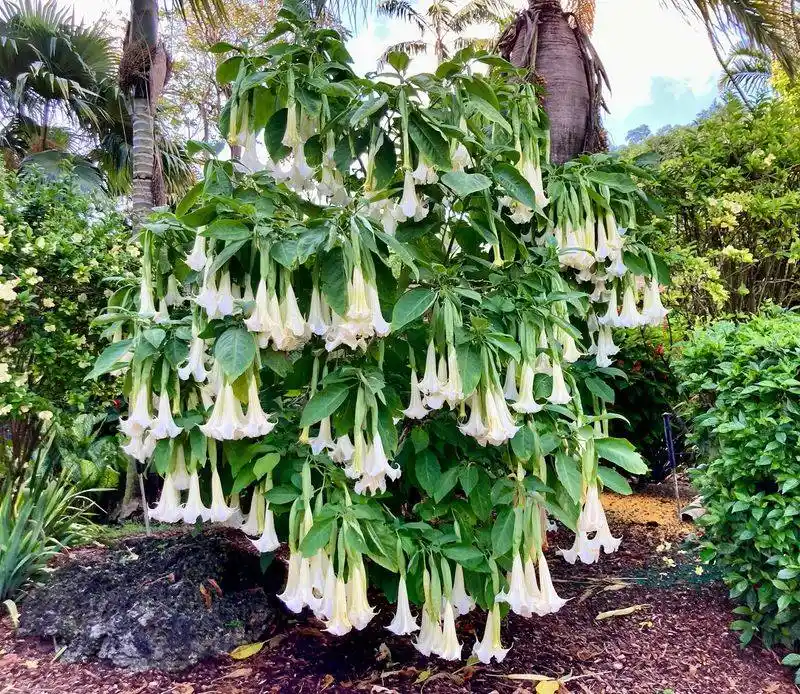
With large, pendulous flowers, Angel’s Trumpet is a sight to behold when it blooms under the moon’s gaze. This tropical shrub, part of the nightshade family, can be as sinister as it is beautiful, with all parts of the plant being toxic if ingested. Nevertheless, its stunning trumpet-shaped flowers are captivating. Originating from South America, the blooms produce a fragrance most potent at night. Picture sitting in a patio chair, the moon casting its glow, while the sweet scent of Angel’s Trumpet drifts through the night air.
Four O’Clock
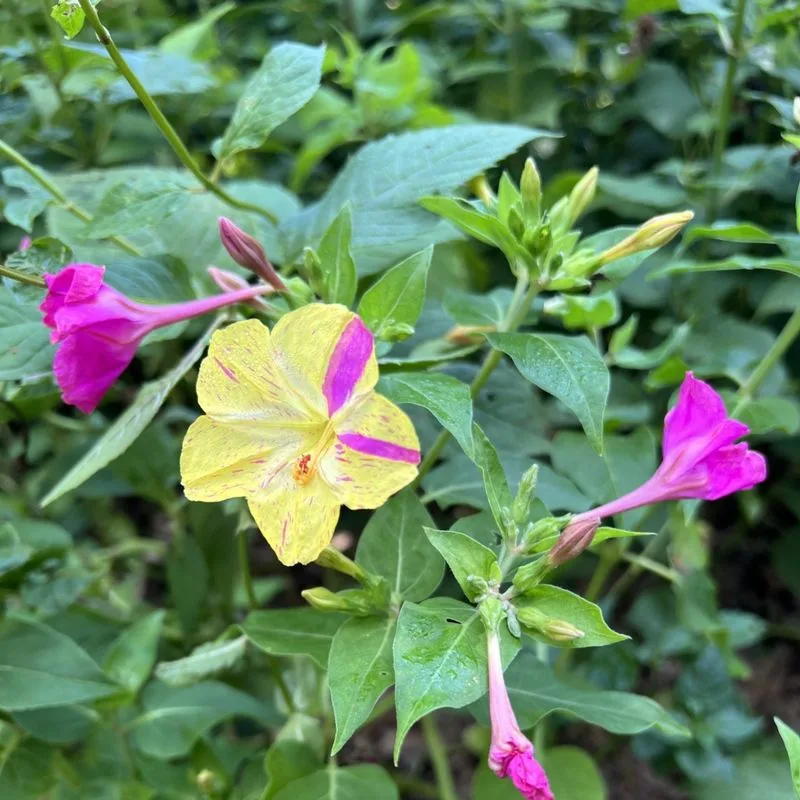
Named for its peculiar habit of opening in the late afternoon, the Four O’Clock plant truly comes alive under the moon. Its vibrant flowers, available in a range of colors, provide a visual feast against the darkening sky. Native to Peru, these blooms emit a sweet scent, attracting nocturnal pollinators. Beyond aesthetics, the plant’s roots have been used in traditional medicine. Imagine a garden transitioning from day to night, where Four O’Clock flowers act as nature’s own clock, heralding the evening with a burst of color.
Queen of the Meadow
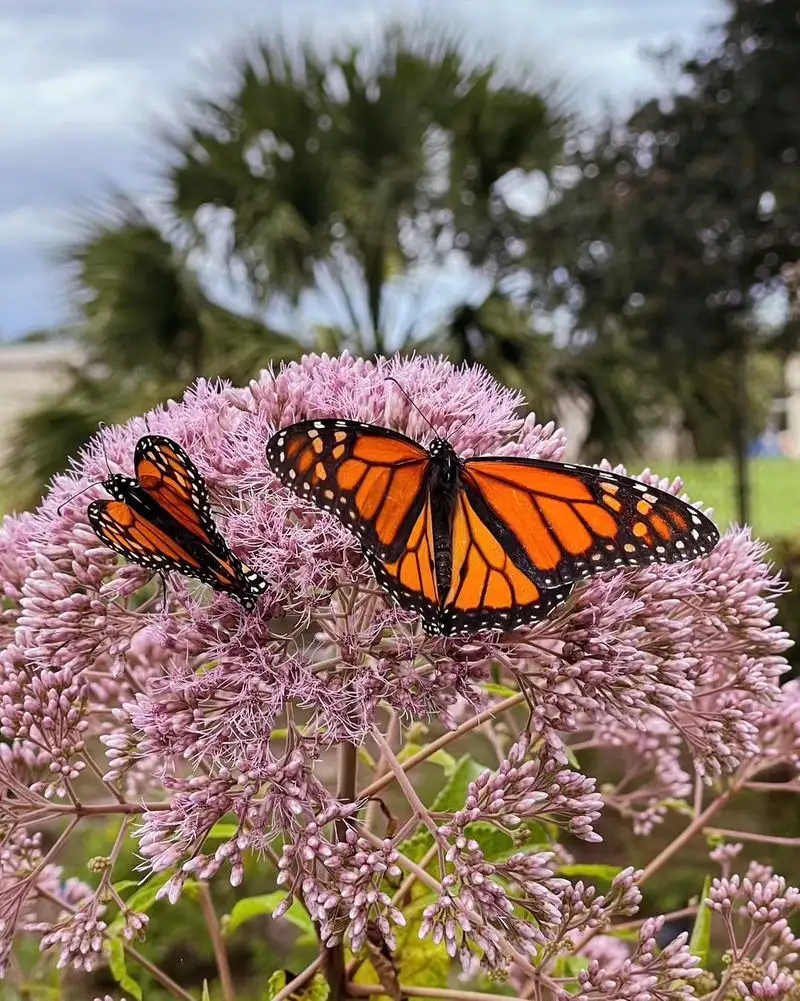
Often overshadowed by their daytime counterparts, these delicate pink blossoms reveal their true charm at night. Queen of the Meadow is a perennial that thrives in moist environments, adding a touch of whimsy to any landscape. As the moon rises, these flowers create a soft, dreamy atmosphere. They are not just about beauty; historically, parts of the plant have been used for their medicinal properties. Envision a moonlit meadow, where the gentle swaying of these blossoms creates a serene, almost otherworldly ambiance.
Night Phlox
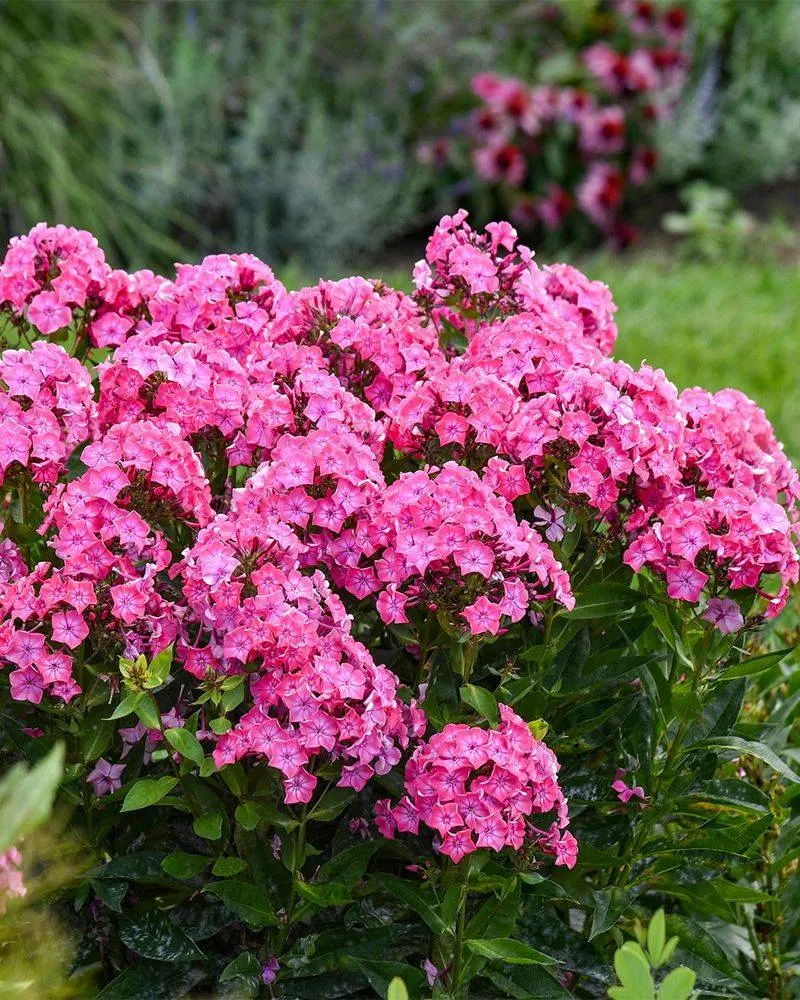
Though modest in size, Night Phlox packs a fragrant punch during its twilight show. Known as the ‘Midnight Candy,’ these star-shaped flowers release a delightful scent reminiscent of vanilla and honey. Native to South Africa, they create a captivating display when planted en masse. As evening gives way to night, their aroma fills the air, inviting both human admirers and nocturnal pollinators. Picture a garden pathway, lined with these charming blooms, where each step is accompanied by their sweet, calming fragrance.
Brahma Kamal
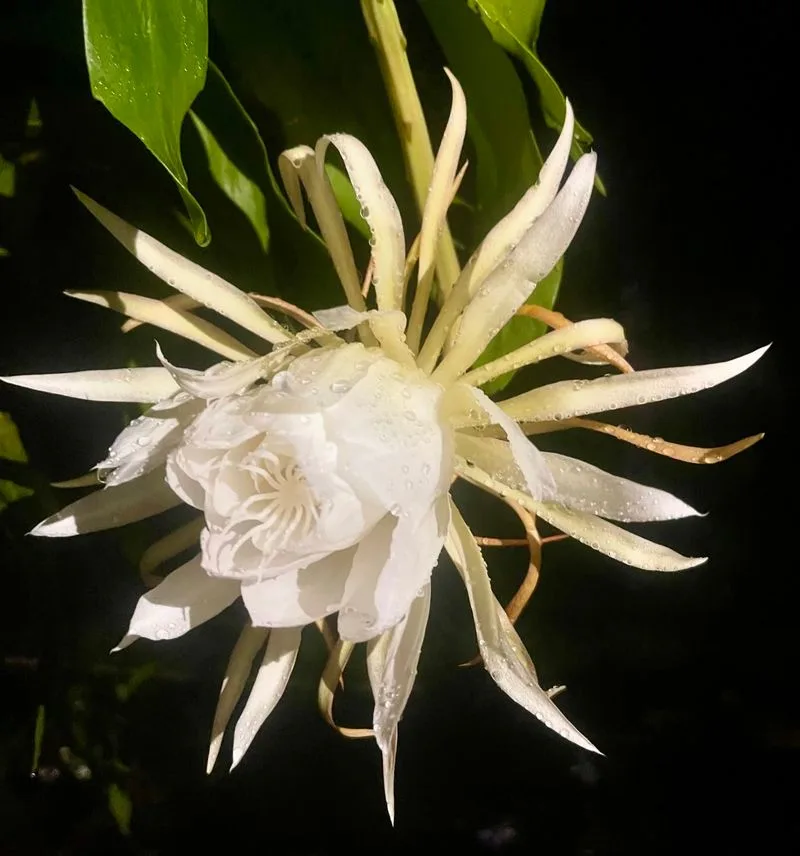
Held in high regard in Indian culture, Brahma Kamal is revered for its mystical blooms. This rare flower, native to the Himalayan region, opens its porcelain-like petals only at night, often under the full moon. It is considered sacred, named after the Hindu god of creation, Brahma. The bloom is short-lived, adding to its mystique and allure. Imagine the high mountain air, crisp and cool, as this rare beauty unfurls, offering a moment of tranquility and spiritual connection to those fortunate enough to witness it.
Nottingham Catchfly
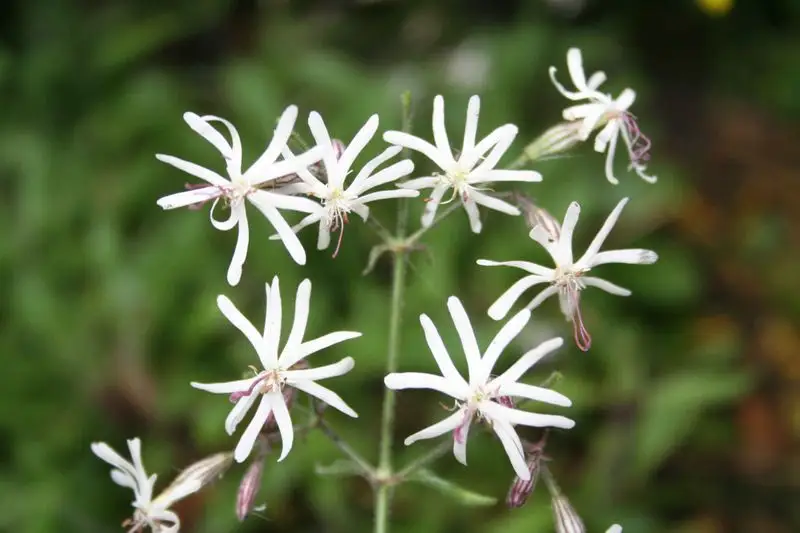
A plant with history, Nottingham Catchfly once adorned the walls of Nottingham Castle. Its delicate white blossoms open at dusk, attracting night-flying insects. This biennial is native to Europe and has become a symbol of historical romance. Despite its fragile appearance, it boasts resilience, thriving in rocky outcrops. Envision a castle garden, where the moon casts a silvery light, and the gentle rustling of petals provides a whisper of the past. This flower has captivated imaginations for centuries, standing as a testament to nature’s enduring elegance.
Datura
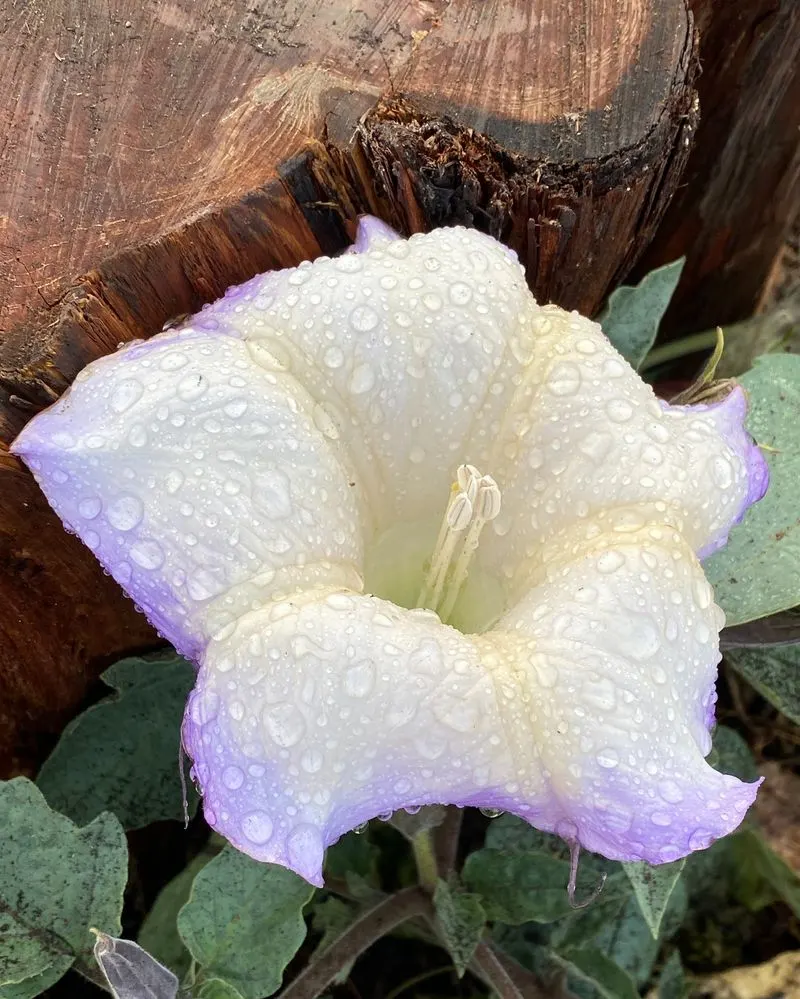
Often associated with both allure and danger, Datura blooms under the moon, releasing a potent scent that hangs in the night air. Its large, trumpet-shaped flowers are mesmerizing, but caution is advised as the plant is highly toxic. Revered in various cultures for its psychoactive properties, it has woven itself into mythology and lore. Picture an evening stroll through a moonlit garden where the silhouettes of Datura flowers create an eerie yet enchanting atmosphere, a testament to nature’s intoxicating power.
Chocolate Daisy
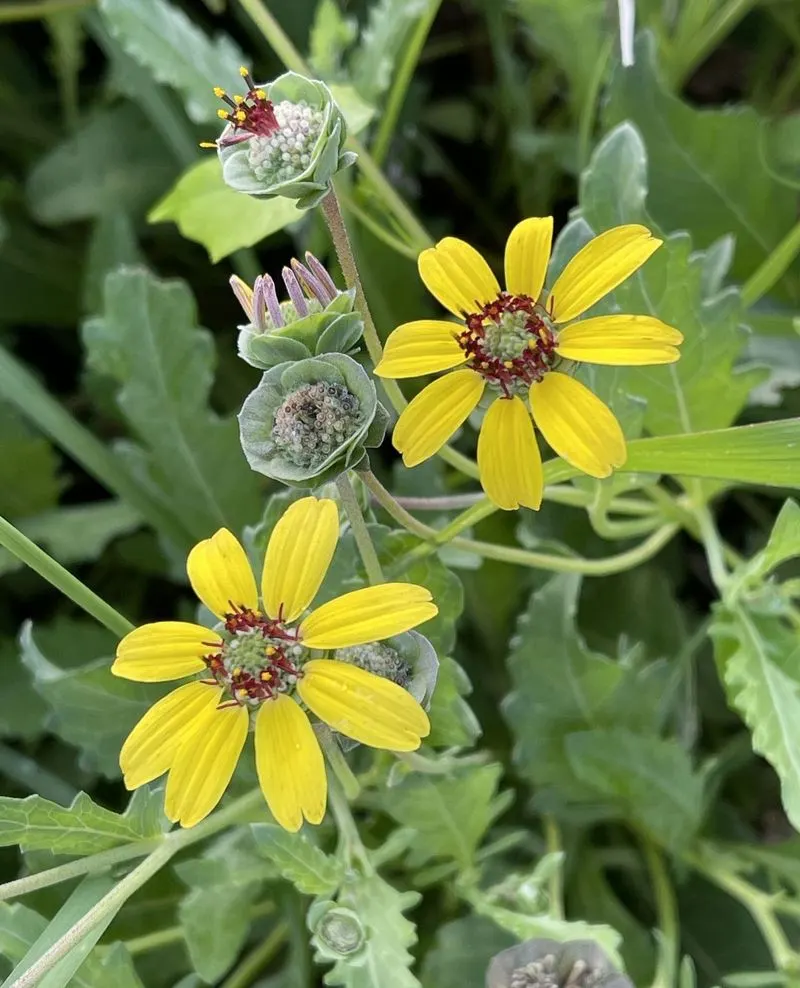
Imagine the surprise of inhaling the sweet aroma of chocolate in a moonlit garden. The Chocolate Daisy, native to the arid regions of the southwestern United States, blooms at night, releasing a delightful cocoa scent. Its bright yellow petals offer a cheerful contrast to the dark, desert landscape. This perennial is not just a sensory delight but also a resilient survivor, thriving in tough conditions. Picture the gentle night breeze carrying the scent of chocolate across a garden, making every step a journey of delightful discovery.
Nicotine Plant
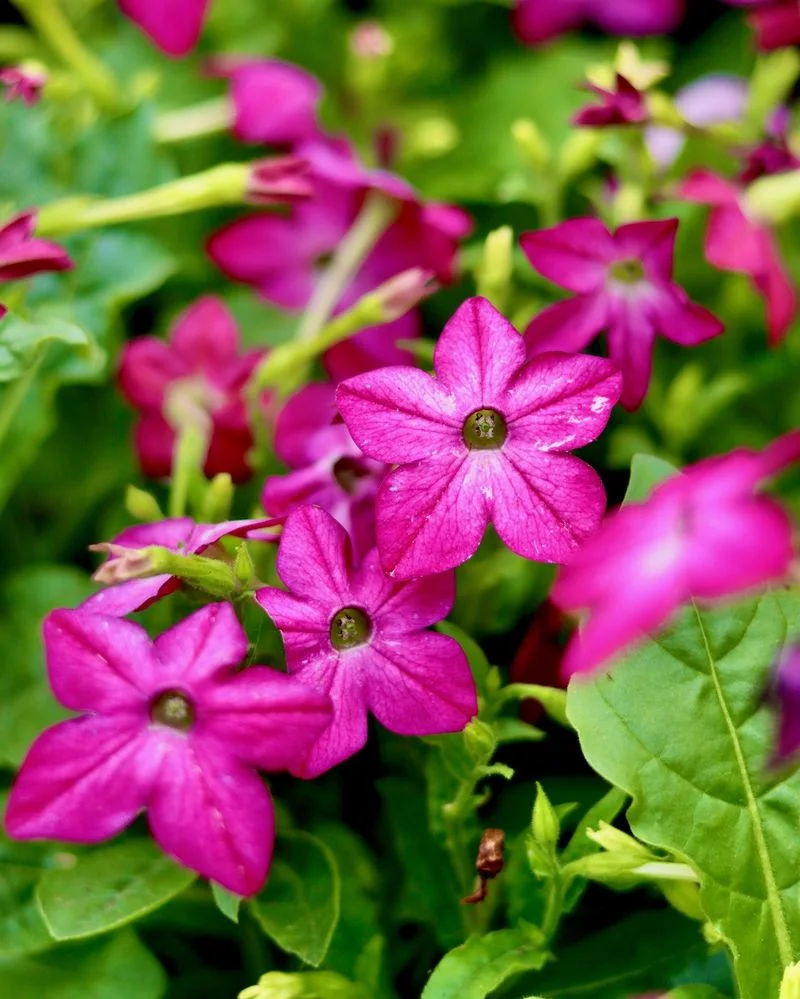
Though often overshadowed by its controversial cousin, tobacco, the Nicotine Plant has its own enchanting allure. Small white flowers bloom at night, releasing a sweet fragrance that attracts nocturnal pollinators. This plant, native to South America, adds a historical twist to moonlit gardens. Its blooms are not just charming; they remind us of the intricate relationships between plants and their nighttime visitors. Imagine a garden where history and nature intertwine, with the Nicotine Plant standing as a silent, fragrant witness to time’s passage.
Cassandra
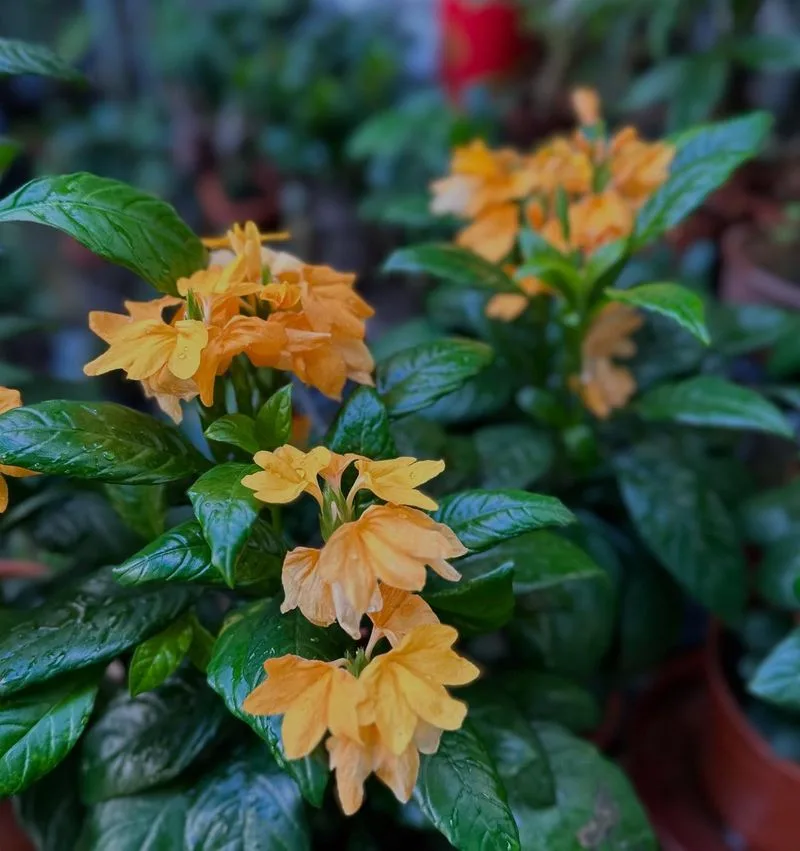
In the mysterious world of swamps, the Cassandra plant weaves a tale of resilience and beauty. This evergreen shrub, with its delicate white blooms, opens in the moonlight, creating an ethereal scene. Native to North America, it thrives in boggy soils, offering a stunning contrast to its murky surroundings. As the moon casts its silvery glow, these blossoms create a mystical atmosphere, inviting contemplation and tranquility. Picture standing by a swamp’s edge, the quiet hum of nature around you, as Cassandra’s blooms light up the night.
Night-Scented Orchid

In the world of orchids, few can match the allure of those that bloom at night. The Night-Scented Orchid, with its intricate flowers, releases a tantalizing scent under the cover of darkness. Native to Southeast Asia, these orchids are both beautiful and mysterious, thriving in the humid tropics. Their nocturnal blooms invite a host of night-time pollinators, creating a symbiotic dance of life. Envision a tropical paradise, where the air is thick with the perfume of orchids, and each bloom tells a story of exotic elegance.
Ghost Orchid

As elusive as a specter, the Ghost Orchid is a rare gem that blooms in the moonlit swamps of Florida and Cuba. Its ethereal white flowers appear to float in mid-air, adding to its mystical reputation. This orchid is highly sought after by enthusiasts, its beauty matched only by its elusive nature. Blooming primarily at night, it relies on specific moths for pollination. Picture a mysterious swamp, where the faint glow of moonlight catches the ghostly silhouette of this orchid, creating an unforgettable spectacle of nature’s artistry.

